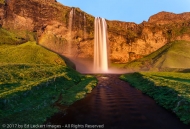

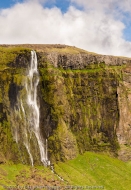
Mount St. Helens is a volcano. A stratovolcano to be exact. And volcanoes are going to do what volcanoes are going to do. Sure, they sit there looking all innocent for a while. But eventually, the active ones get tired of just sitting there, and they do something about it. Back on May 18, 1980, Mount St. Helens did something about it.
I wasn’t “lucky” enough to be here in 1980 to see all the excitement – I was still safe and sound back in New Orleans, where all we had to worry about is Category 5 hurricanes. But people I’ve talked to who witnessed the eruption tell me it was quite the event.
One of my friends, Tom Peterson, lived in the Seattle area at the time, and decided to head east across the Cascade mountain range to get away from the “fallout”. Didn’t work. You see, the winds were coming out of the southwest, so they blew the ash right up over I-90 and into Tom’s path. The layer of ash on his car was nothing to sneeze at. I don’t remember how the story ended, but Tom survived, somehow.
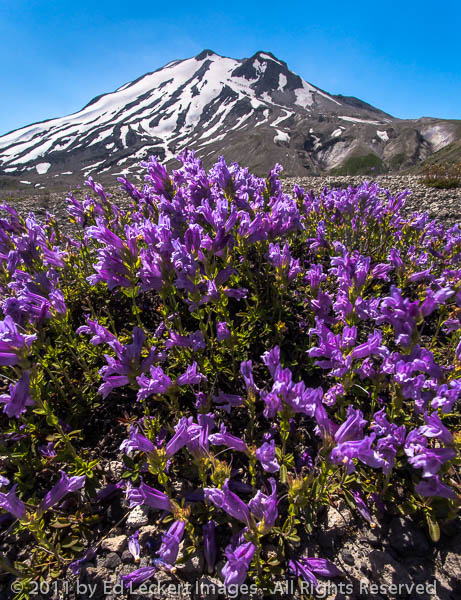
A patch of Davidson’s penstemon grows below Mt. St. Helens, in Mount St. Helens National Volcanic Monument, Washington.
The same can’t be said for good old Harry Truman. No, not that Harry Truman. President Harry S. Truman died in 1972, so he missed it by 8 years. No, Harry Randall Truman, owner and caretaker of Mount St. Helens Lodge at Spirit Lake, became a local celebrity when he refused to leave after evacuation orders were issued for the area. In the two months of huffing and puffing leading up to the eruption, Harry gave numerous interviews, claiming that “the mountain is a mile away, the mountain ain’t gonna hurt me”, and “If the mountain goes, I’m going with it.”. Well, he went with it, along with his 16 cats and 56 other people in the disaster area, making this the deadliest and most destructive volcanic eruption in the history of the continental United States.
Back in 2011, my hiking buddy, the late Tom Ginal, asked me if I wanted to go on a hike in the Mount St. Helens National Volcanic Monument and get some wildflower photos. It’s a bit of a drive, and I don’t get down that way much, so I jumped at the chance. Tom was a walking encyclopedia of trail knowledge in the Pacific Northwest, so if he said the wildflowers would be peaking, I knew they would be.
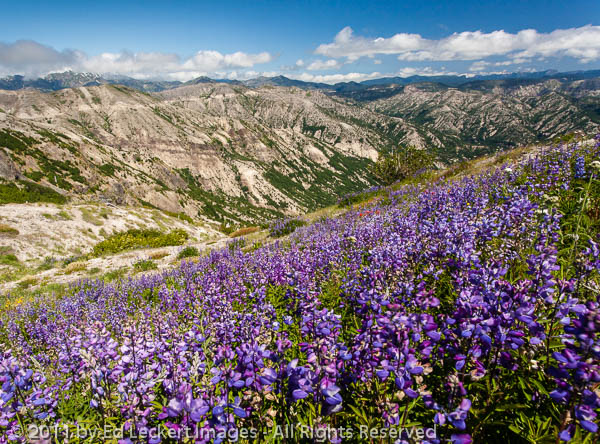
A field of lupine spreads out across the hillside, near Mt. St. Helens, in Mount St. Helens National Volcanic Monument, Washington.
The plan was to hike to the northeast of the crater at a place called Windy Ridge. We would look for wildflowers, visit a small waterfall, hike on the Truman Trail, and see the (now much higher in elevation) Spirit Lake where Harry had lived. Harry himself was presumed to be about 150 feet (46 m) straight down, buried with his poor cats.
Mount St. Helens National Volcanic Monument is, as you might expect, undergoing a period of recovery, as it will be doing for some time in the future. But that doesn’t mean it’s a wasteland. There’s plenty of beauty there, popping out of the ash. In fact, with the trees incinerated and buried, there’s plenty of sunlight for the wildflowers, which have come back in large numbers all over the area. So while the place is far from being lush, it does have quite a bit of color in the summer.
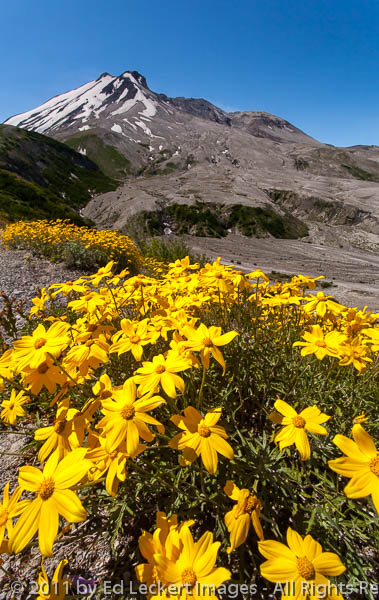
After all the destruction from a volcanic eruption comes the color from wildflowers, in Mount St. Helens National Volcanic Monument, Washington.
So if you live in the Seattle area and want to get in a hike away from the crowds along the I-90 corridor, consider heading south a bit to visit an old friend. While Mt. St. Helens is still puffing and belching occasionally, I suspect it will be a while before it blows its top again – partly because it doesn’t really have a top any more!
